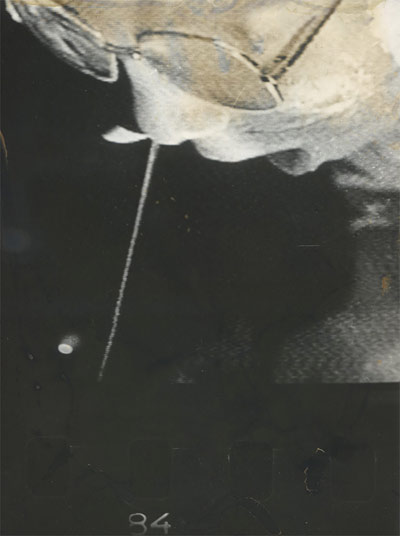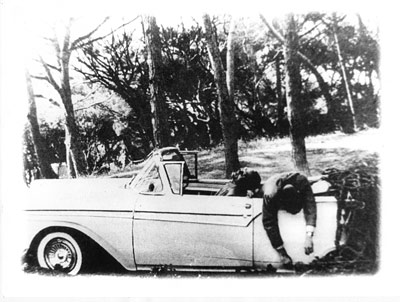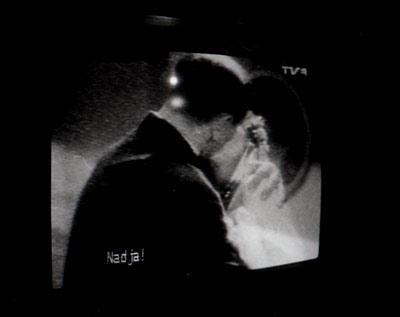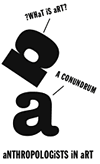|
The exhibition features a set of traditionally made colour collages (Dziaczkowski)
juxtaposed with black-and-white photography reprints and videos (Bojarov)
that together generate a surrealistic picture of the world where there
are no boundaries, and different spaces and times conflate into one continuum. Even
though both Bojarov and Dziaczkowski use seemingly different visual languages,
their works equally release a certain tension between the known and the
unknown, familiar (domestic) and foreign, real and surreal. This kind
of praxis fits perfectly in what might be called a postmodern reality
or liquid modernity with an absence of actual forms or set rules, only
a sustained collage of everything we know.
Organised in collaboration with The Foundation for Visual Arts from
Krakow.
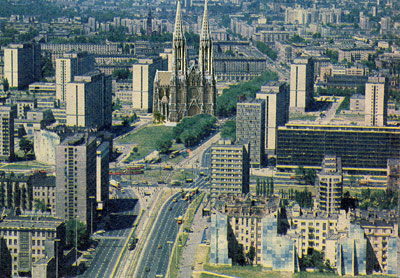 Collage
by: Jan Dziaczkowski, Vienna, z cyklu/from the series Keine
Grenze, 2009. Dzie˛ki uprzejmos´ci Fundacji Sztuk Wizualnych / Courtesy
of Foundation for Visual Arts Collage
by: Jan Dziaczkowski, Vienna, z cyklu/from the series Keine
Grenze, 2009. Dzie˛ki uprzejmos´ci Fundacji Sztuk Wizualnych / Courtesy
of Foundation for Visual Arts
About the artists:
Jan Dziaczkowski is a painter, photographer and collage
artist, also author of illustrations for magazines dedicated to music,
social issues and culture, books and album covers.
He was born in 1983 in Warsaw/Poland. In 2007 graduated from the Painting
Department of Fine Arts Academy in Warsaw. Between 2004-2007 he co-founded
an informal group called Nuku Workshop. In 2007 his debut album "Collages"
was released by the Ha!art Corporation. His output included also illustrations
for Machina, Architecture, A4, Ha!art and Przekrój magazines.
He took part in numerous collective exhibitions, e.g. Renoma. Reflections
of Wrocław - Arup Phase 2 Gallery, London, UK (2009), You Can't Get There
From Here, CCNY, New York / USA (2010), Modernization / Modernización,
Aula Cultural Universidad Abierta - Universidad Castilla-La Mancha, Cuenca
/ Spain (2010) and solo shows, e.g. Keine Grenze at V8 Gallery, Cologne,
Germany (2009) and at Laurence Miller Gallery, New York / USA (2010).
He died tragically in September 2011 in an accident in the Tatra Mountains.
|
|
Anthropologists in Art oraz DOBRE
Cultural Platform
zapraszają na wystawę:
IF I COULD REACH THE BORDER,
THEN I WOULD STEP ACROSS
Time and the other in the visual language of
Andrij Bojarov and Jan Dziaczkowski
WM Gallery Amsterdam, 6
kwietnia - 18 maj, 2013
Wernisaż: sobota, 6 kwietnia w godz. 17.00- 19.00
WM Gallery w Amsterdamie ma zaszczyt zaprezentować
wystawę If I could reach the border, then I would step across. Będzie
to pierwsza w Holandii prezentacja prac dwóch współczesnych artystów z
Europy Środkowo-Wschodniej: Jana Dziaczkowskiego (Polska, 1983-2011) oraz
Andrija Bojarova (Ukraina/Estonia, ur. 1961). Wystawa, zorganizowana przez
stowarzyszenia Anthropologists in Art oraz DOBRE Cultural Platform, przy
współpracy z Fundacją Sztuk Wizualnych z Krakowa, przedstawia swoistą
grę języka wizualnego krajów postsocjalistycznych z ikonami kultury „Zachodu”.
W efekcie powstała alternatywna wizja świata ponad namacalnymi granicami..
Wspomniana w tytule wystawy granica jest symbolem odseparowania Europy
Wschodniej od kapitalistycznego społeczeństwa Zachodu. Jest ona granicą
nie tylko w znaczeniu geograficzno-politycznym, ale także barierą odgradzającą
państwa (post)komunistyczne od zachodnich wzorców kulturowych i estetycznych.
Co ciekawe, efekt tego oddzielenia jest odwrotny niż można było przypuszczać.
Na przekór historii, intelektualiści i artyści z Polski czy Ukrainy nierzadko
tworzyli w awangardzie do pozornie bardziej progresywnych kolegów z Zachodu.
Pożyczanie, przystosowywanie, a w końcu przetwarzanie kapitalistycznych
wzorców było aktem przekory wobec skrywanej chęci współtworzenia bardziej
wyrafinowanego i wolnego świata Zachodu, jak również aktem subwersji wobec
prowincjonalizmu i represywnej polityki państwa.
Na wystawie zestawione zostały tradycyjnie wykonane, barwne kolaże Jana
Dziaczkowskiego z czarno-białymi fotografiami i pracami video Andrija
Bojarova. Zaprezentowana twórczość to swoistego rodzaju gra z formą i
symbolem, która urzeczywistnia napięcia pomiędzy tym, co znane i nieznane,
oswojone i obce, prawdziwe i nierealne. W efekcie powstał surrealistyczny
obraz świata bez granic, w którym odmienne czasoprzestrzenie scalają się
w jedno spójne kontinuum. Całość można określić mianem rzeczywistości
postmodernistycznej, gdzie brakuje jednoznacznych form i ustalonych zasad,
a istnieje jedynie kolaż złożony z elementów naszej wiedzy.
Wystawa zorganizowana przy współpracy z
Fundacją
Sztuk Wizualnych z Krakowa.
|
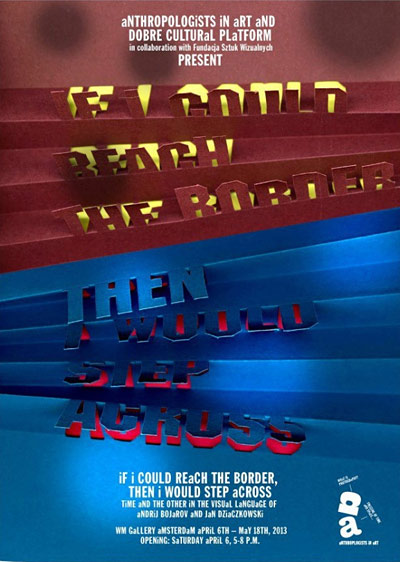
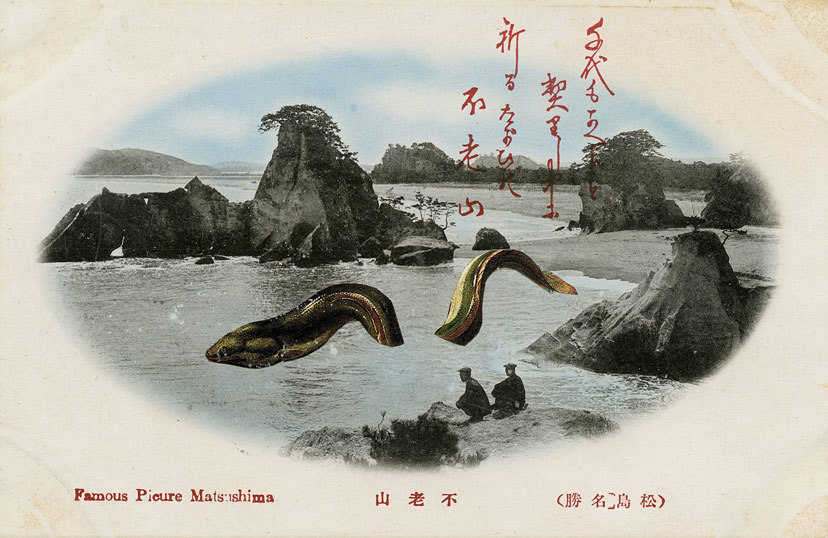
 Collage
by: Jan Dziaczkowski, Vienna, z cyklu/from the series Keine
Grenze, 2009. Dzie˛ki uprzejmos´ci Fundacji Sztuk Wizualnych / Courtesy
of Foundation for Visual Arts
Collage
by: Jan Dziaczkowski, Vienna, z cyklu/from the series Keine
Grenze, 2009. Dzie˛ki uprzejmos´ci Fundacji Sztuk Wizualnych / Courtesy
of Foundation for Visual Arts 